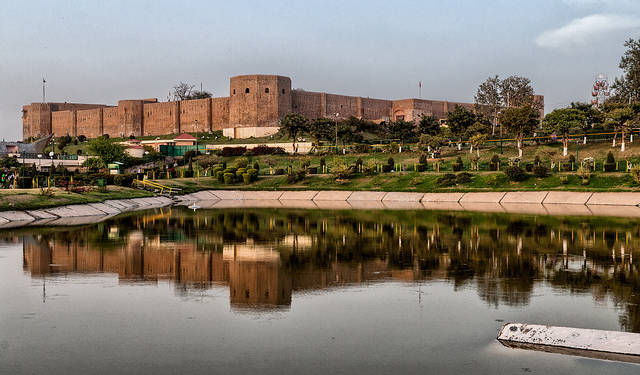A welcome move that very well might break the hegemony of Kashmiris in Jammu & Kashmir and give the Dogras of the state their long-overdue recognition, a multi-crore project has been announced by the Union government.
According to a report in WION, a mega multimedia project worth Rs 10 crore is set to be established in Jammu City by September end, which will highlight the glory days of the Dogra rule in the state.
“The history of Dogra rule will be the focus in the light and sound video show,” said Chamandeep, one of the engineers from the Tourism Department of the Union Territory of Jammu and Kashmir entrusted with executing the project.
As many as 400 people would be able to watch the show that will be broadcasted in Hindi at the Bagh-e-Bahu, near the historic Bahu fort that overlooks the city of Jammu.
Bagh-e-Bahu and Bahu Fort were built by Raja Bahulochan who was the son of first Dogra King Jambulochan of the Agnigarbha Sooryvanshi Dynasty.
The name of Jammu comes from the name of Raja Jambulochan himself. Several historians have stated that Bahu fort is located at the spot from where he founded his kingdom.
Dogras—the lost ‘minorities’ of the state
Over the years the immense contribution of Dogras in Jammu & Kashmir’s history has gone unnoticed. The political narrative and discourse of the region have entirely shifted to the problems of Kashmir valley and the Kashmiri people.
The Dogras are predominantly Hindus, though there are Sikh and Muslim Dogras as well, they all have been grossly neglected in the garb of ‘Kashmiriyat’ in the state.
Through the 70 year rule of Congress and UPA, the Dogras have lived in perpetual fear of their Kashmiri political masters. They would speak of the wrongs done to them in hushed tones, in the confines of their homes, but never openly, fearing for their jobs, postings, and promotions.
The Nehru-Sheikh Abdullah class of politics and its graduates whose second-third generation still preside in the power corridors of the leftist media have conveniently side-stepped the history of Dogra.
The people of the country need to understand that Jammu and Kashmir is not limited to Kashmiris and that there are several multi-ethnic and multi-religious groups in the region of Jammu and Ladakh.
The previous regimes, (read: UPA), sympathetic to the cause of radical Islamists had marginalized the region of Jammu and Ladakh to a point of no return.
But the abrogation of article 370 has given a new breathing space to these regions to reclaim their long-lost glory. The current NDA government realizes that to bring lasting peace in the region, its history needs to be revived too.
The move to showcase the gallant stories of Dogras will set an example and hopefully break the wheel of injustice and identity-crisis that the Dogras had been facing over the years.
The indefatigable Dogras and their glorious history of ruling the state of Jammu and Kashmir and their role in the security and safety of the nation need to be to showed unabashedly and proudly to the countrymen.































